Rhythm and Blues Saxophone Playing | Blues Transcriptions

The R & B saxophone player list
These biographies, photos and soundclips include all the influential R & B saxophone players of the 40s and 50s. Some of these are jazz players who contributed significantly to the development of blues saxophone, others are hardcore bar walking “screamers and honkers.” Enjoy learning about this colorful era of the saxophone. My list of players (and I’m still receiving suggestions) could be endless, so in some respects I’ve had to be brutal. I would like to have included more of the bluesy jazz players such as Lou Donaldson, Hank Crawford, Stanley Turrentine, Leo Parker. In fact some of the players I did include were very fine jazz musicians and may prefer to think of themselves as such rather than primarily R&B players.
Who’s in and who’s out?
In the end I decided to include players who were either out and out R & B rocking ” Screamers and Honkers”, or blues jazz players if they also worked as session musicians on R&B records. Or maybe their jazz recordings fitted firmly into how we think of an R&B record, e.g. a dance groove with a solid back beat or boogie feel, so somehow, Roland Kirk managed to slip in there! Neither did I include players who predominantly made their mark in the 60s and later, e.g. Maceo Parker, Jim Horn, Steve Douglas or Edgar Winter. I have included Junior Walker as he was around and out there gigging in the mid 50s as a very young man.

Lee Allen
Lee’s playing epitomises New Orleans Rock & Roll, he was a member of the famous Cosimo’s studio “house band” (along with Red Tyler on baritone, see below) and so played the seminal solos on the early hits by Little Richard, plus countless other stars of the time: Fats Domino, Etta James etc.
He became a an artist in his own right with his 1957 hit Walking With Mr Lee, so titled after his habit of walking on the spot as he got more and more into a solo. Whereas Plas Johnson had a more typical rock and roll saxophone sound, Lee’s was very much his own unique sound. His phrasing was very rooted to the beat, yet somehow was the funkiest feel of anyone. Also see: Lee Allen interview Gayten’s Nightmare (with Paul Gayten) Tough Lover (with Etta James)

Sil Austin
Sylvester Austin was born in Florida and moved to New York after winning a recording contract with Mercury Records in a talent competition. After studying at Juilliard, he went on to work with Roy Eldridge and Tiny Bradshaw before starting his own group, which had considerable commercial success not only touring but also in the R & B charts. Train Whistle
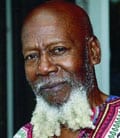
Harold Battiste
Another New Orleans saxman, Harold became more of a leading light as a producer, composer and arranger with credits that include Lee Dorsey, Joe Jones, Sonny & Cher and, importantly, was responsible for transforming guitarist Mac Rebennack into Dr. John. He started out inspired by Lee Allen, but soon became interested in jazz and beyond. As well as forming AFO Records, he became very active in jazz education and many cultural organisations. In 1998, the City of New Orleans proclaimed his birthday as Harold Battiste Day The Pickup (with Etta James)

Rusty Bryant
Rusty was raised in Columbus, Ohio, where he played on the local scene almost right up to his death in 1991. His early work was as a sideman with Tiny Grimes, but soon formed his own band, and recorded hits such as All Night Long. His style jumps out as hard swinging and constantly driving, almost as if he’s leading the rhythm section from his horn. Honeydripper
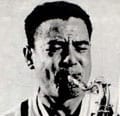
Sam Butera
Another New Orleans man, like Lee Allen he started out playing in Paul Gayten’s big band. He also toured with Tommy Dorsey, but relocated back to New Orleans where he worked at a club owned by Louis Prima’s brother, which lead to Louis Prima signing him up as band leader, arranger and chief jump, jive and wailer with his new Las Vegas small band. There is a rumour that when David Lee Roth covered his famous arrangement of Just a Gigolo, Sam he never forgave him for not paying for it. After Prima’s death, Sam continued the legacy and stayed on as leader of the band (Sam Butera and the Witnesses) in Vegas. Jump, Jive & Wail
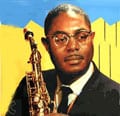
Earl Bostic
“Nobody knew more about the saxophone than Bostic, I mean technically, and that includes Bird.”
– Art Blakey. Earl Bostic came to new York in the 40s after studying composition at home in New Orleans. He was a regular on the bebop jam session scene with Charlie Parker and Dizzy Gillespie but went on to play a more commercial style when he became a band leader in the early 50s. (The young John Coltrane was one of his sidemen). He was an absolute master of the saxophone with a style that, although very definitely full of soul and gutsy R & B, had a formidable technique with an almost uncanny ability to formulate and place every note and every phrase of his improvisation perfectly. Bostic’s Jump
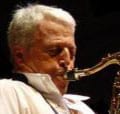
Jimmy Cavallo
Jimmy is a New Yorker, but paid his dues on the southern R & B scene, not so easy for a white man in those days. When he arrived back in New York he found it tough playing R & B in the white clubs where he could get the easiest work, but finally managed to win over the Italian American audience. His first record, Rock the Joint was possibly the first rock and roll record (though there are other contenders). 1956 was his big year when he appeared at Allen Freed’s legendary Brooklyn Paramount shows with Fats Domino and Big Joe Turner, followed by a star appearance in Freed’s cult movie classic Rock, Rock, Rock. He subsequently made history as the first white act at the Apollo. Leave Married Women Alone

Eddie Chamblee
Eddie’s family moved from Georgia to Chicago, where he spent much of his life. Although a promising young musician, he decided to study law at Roosevelt University, but then became involved with music in the army and decided to pursue it as his career after leaving. He had a local hit with Long Gone which heralded the beginning of his success. He did the almost obligatory stint with Lionel Hampton, then married and recorded with Dinah Washington Later on he moved to New York and worked with Count Basie and then the Harlem Blues and Jazz Band. Sweet Lucy

Arnett Cobb
Another great Texas tenor, one of his first jobs was with Milton Larkin, playing alongside Eddie Vinson and Illinois Jacquet. He then joined Lionel Hampton’s band, fitting seamlessly into Jacquet’s “Flying Home” shoes, so that Hampton rerecorded the number with Cobb playing the famous solo. Ironically it had been Cobb’s big booting sound that had originally influenced Jacquet. In spite of ill health and a serious injury sustained in a car crash whih made him reliant on crutches, Cobb continued to be a major attraction on the festival circuits of the U.S. and Europe almost right up to his death in the late 80s. Cobb’s Corner

King Curtis
While Plas was cleaning up on the West Coast session scene, Curtis was doing likewise on the East Coast. He paid his dues in Lionel Hampton’s band, where he learnt his skill as an arranger. His discography is immense, both as a sideman (for acts such as the Coasters, Buddy Holly and Aretha Franklin) and as a recording artist in his own right as King Curtis and the Kingpins, famous for such hits as Soul Twist and Memphis Soul Stew. His highly articulated solo on the Coasters’ Yakety Yak became the inspiration for Boots Randolph’s hit, Yakety sax. Tragically, a drug addict stabbed Curtis to death on the streets of New York. Soul Twist
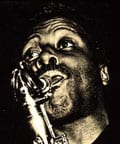
Eddie “Lockjaw” Davis
Davis is well known to big band and jazz fans for his time Cootie Williams, Lucky Millinder, Andy Kirk, Louis Armstrong, and especially Count Basie. Once he started leading his own groups, although always thought of as a jazz musician, he was never afraid of some gutbucket or even screaming and honking. He had a minor hit with his record Lockjaw, which gave him his nickname “Lockjaw” or just “Jaws”. Lockjaw was a pioneer of the tenor/organ combo, teaming up with Shirley Scott – an inspiration for the likes of Rusty Bryant and Willis Jackson. Leapin’ on Lennox

Maxwell Davis
Maxwell Davis was born in Kansas, but moved to Los Angeles where he started out playing in swing big bands such as Fletcher Henderson. It wasn’t long before he started doing club dates with his own band, cashing in on the post war interest in R & B. After signing to Aladdin, he also began to pick up session work with the likes of Amos Milburn, Charles Brown and Peppermint Harris. He gradually put the horn back in its case to work more in production, but was always known as “The Father of West Coast R & B” Hung Out

Danny Flores (Chuck Rio)
Known as “Godfather of Latin Rock ” Danny must have been taken by surprise when the riff/tune he wrote as a B-side, Tequila, became a hit in 1958. At the time Danny was under contract as a singer to another label, so used the pseudonym Chuck Rio. He sold the U.S. rights to the tune, a practice common at the time, but luckily kept the copyright oustide the U.S., and as we know, Tequila was and is a worldwide hit. Tequila
Jimmy Forrest
 Jimmy made his way up through the big bands: Jay McShann, Andy Kirk and Duke Ellington. Later on he became a feature of the Count Basie orchestra, In the 50s he led his own small group and recorded his most famous work Night Train which became probably the most played R & instrumental of all time. The tune is inspired by the Ellington theme Happy Go Lucky Local. Boxer Sonny Liston was a big fan, it is said he listened to Night Train before every fight. Night Train
Jimmy made his way up through the big bands: Jay McShann, Andy Kirk and Duke Ellington. Later on he became a feature of the Count Basie orchestra, In the 50s he led his own small group and recorded his most famous work Night Train which became probably the most played R & instrumental of all time. The tune is inspired by the Ellington theme Happy Go Lucky Local. Boxer Sonny Liston was a big fan, it is said he listened to Night Train before every fight. Night Train
Grady Gaines
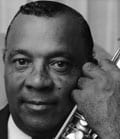 While Lee Allen did the bulk of Little Richard’s early studio recordings, Grady Gaines (yet another Texas tenor) took care of business on the live shows with the Upsetters. It was Grady playing that Frantic relentless riff on You Keep a Knockin. Also it was Grady who featured with Richard in the movies, Girl Can’t Help It, Don’t Knock The Rock and Mister Rock & Roll. His playing seems to be very influenced by Lee, it is powerfully energetic and takes no prisoners. In the late 80s he reformed his own band, this time the “Texas Upsetters”, probably for contractual reasons. She’s Got It
While Lee Allen did the bulk of Little Richard’s early studio recordings, Grady Gaines (yet another Texas tenor) took care of business on the live shows with the Upsetters. It was Grady playing that Frantic relentless riff on You Keep a Knockin. Also it was Grady who featured with Richard in the movies, Girl Can’t Help It, Don’t Knock The Rock and Mister Rock & Roll. His playing seems to be very influenced by Lee, it is powerfully energetic and takes no prisoners. In the late 80s he reformed his own band, this time the “Texas Upsetters”, probably for contractual reasons. She’s Got It
Herb Hardesty
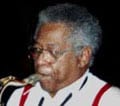 Another great player from the Crescent City, Herb is famous for his work with Fats Domino. His sound is unique, more refined than Lee Allen’s, but unmistakably New Orleans with subtle bends and flawlessly swinging staccato. Oddly, it was Herb who played baritone on the famous eight bar break on Blue Monday. He was with Fats from 1949 when he first recorded until the 90s, but has also worked with many artists including BB King, Dr. John and Tom Waits. I’m Walking (Fats Domino)
Another great player from the Crescent City, Herb is famous for his work with Fats Domino. His sound is unique, more refined than Lee Allen’s, but unmistakably New Orleans with subtle bends and flawlessly swinging staccato. Oddly, it was Herb who played baritone on the famous eight bar break on Blue Monday. He was with Fats from 1949 when he first recorded until the 90s, but has also worked with many artists including BB King, Dr. John and Tom Waits. I’m Walking (Fats Domino)
“Blind ” John Hart
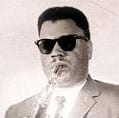 Very little is recorded about John Hart. Most of his musical career he was known as the saxophonist with Clifton Chenier, but also played with Li’l Bob and the Lollipops, Rockin Dopsie and the Cajun Twisters. It’s intriguing to hear a saxophone in Zydeco music, doubling and complementing the accordion. Hart had an unusual technique of playing the low Bb, B, C and C# up an octave as if regular notes of the upper register. Ride ‘Em Cowboy
Very little is recorded about John Hart. Most of his musical career he was known as the saxophonist with Clifton Chenier, but also played with Li’l Bob and the Lollipops, Rockin Dopsie and the Cajun Twisters. It’s intriguing to hear a saxophone in Zydeco music, doubling and complementing the accordion. Hart had an unusual technique of playing the low Bb, B, C and C# up an octave as if regular notes of the upper register. Ride ‘Em Cowboy
Chuck Higgins
 Chuck’s style is very much a raw R & B type blues honker with a driving growling style, in spite of (or because of?) his music college education. Known for local hits, Boyle Heights and Pachuko Hop, he mixed in some latin influences, which gave him some popularity around the streets and dance halls of Los Angeles. Later he adapted to disco music, but went back to his R & B roots when jump jive and honking rhythm & blues was revived in the 80s. Wet Back Hop
Chuck’s style is very much a raw R & B type blues honker with a driving growling style, in spite of (or because of?) his music college education. Known for local hits, Boyle Heights and Pachuko Hop, he mixed in some latin influences, which gave him some popularity around the streets and dance halls of Los Angeles. Later he adapted to disco music, but went back to his R & B roots when jump jive and honking rhythm & blues was revived in the 80s. Wet Back Hop
Red Holloway
 Red grew up in Arkansas, where he went to school with hardbop pioneer Johnny Griffin and then music school in Chicago. A highly proficient jazz musician, he started working with various blues artists (Roosevelt Sykes, Willie Dixon, Lloyd Price, John Mayall, Muddy Waters) and so became typecast as a blues player, but continued his jazz career touring with Lionel hampton and Sonny Stitt. It was Stitt who persuaded him to play alto as well as tenor Buttermilk
Red grew up in Arkansas, where he went to school with hardbop pioneer Johnny Griffin and then music school in Chicago. A highly proficient jazz musician, he started working with various blues artists (Roosevelt Sykes, Willie Dixon, Lloyd Price, John Mayall, Muddy Waters) and so became typecast as a blues player, but continued his jazz career touring with Lionel hampton and Sonny Stitt. It was Stitt who persuaded him to play alto as well as tenor Buttermilk
Lynn Hope
 Lynn is from Birmingham, Alabama, where he started out touring with King Kolax, but stopped off in Chicago where there was a thriving R & B scene. He made his name as a ballad player, but has no shortage of ideas on something as paradoxically tricky as the practically one chord Blues For Anna Bacoa (Modal R & B?) He became a muslim and changed his name to Al Hajj Abdullah Rasheed Ahmad. He continued to perform wearing his trademark turban, and in fact he was well received in the Middle East where he toured from time to time. Blues for Anna Bacoa
Lynn is from Birmingham, Alabama, where he started out touring with King Kolax, but stopped off in Chicago where there was a thriving R & B scene. He made his name as a ballad player, but has no shortage of ideas on something as paradoxically tricky as the practically one chord Blues For Anna Bacoa (Modal R & B?) He became a muslim and changed his name to Al Hajj Abdullah Rasheed Ahmad. He continued to perform wearing his trademark turban, and in fact he was well received in the Middle East where he toured from time to time. Blues for Anna Bacoa
Joe Houston
 Houston is another Texas tenor who relocated to Los Angeles after a spell paying his dues on the “chitlin circuit”. He recorded with Amos Milburn, Big Joe Turner, Wynonie Harris, King Kolax and many others. He had several of hits in the early 50s with Worry, Worry, Worry and Hard Time BabyAll Night Long etc. Joe was a prolific recording artist, with his own band and as a sideman. Candy Rock
Houston is another Texas tenor who relocated to Los Angeles after a spell paying his dues on the “chitlin circuit”. He recorded with Amos Milburn, Big Joe Turner, Wynonie Harris, King Kolax and many others. He had several of hits in the early 50s with Worry, Worry, Worry and Hard Time BabyAll Night Long etc. Joe was a prolific recording artist, with his own band and as a sideman. Candy Rock
Bullmoose Jackson
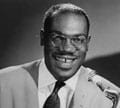 A well loved blues singer and purveyor of risque lyrics (e.g. Big Ten Inch Record), Bullmoose Jackson was also a fine honking saxman. His singing career started when, as a sideman with Lucky Millinder, Wynonie Harris didn’t show and Jackson was quickly pushed to the front of the stage to take care of vocals. The rest is history – he performed regularly with his band the Buffalo Bearcats. More or less retired in the 60s, he was rediscovered and given a new lease of life by the Flashcats in the 80s. Nosey Joe
A well loved blues singer and purveyor of risque lyrics (e.g. Big Ten Inch Record), Bullmoose Jackson was also a fine honking saxman. His singing career started when, as a sideman with Lucky Millinder, Wynonie Harris didn’t show and Jackson was quickly pushed to the front of the stage to take care of vocals. The rest is history – he performed regularly with his band the Buffalo Bearcats. More or less retired in the 60s, he was rediscovered and given a new lease of life by the Flashcats in the 80s. Nosey Joe
(Little) Willie Jackson
 West Coast alto and baritone player Jackson was the driving force behind Joe Liggins’ big hit The Honeydripper. His playing comes very much from the style of earlier swing bands, sometimes with an almost dixielandish vibrato, but nonetheless dripping with the blues. In the late 40s he recorded with the rest of the Honeydrippers (without Joe Liggins), fronting the band as singer and alto player. Jackson’s Boogie
West Coast alto and baritone player Jackson was the driving force behind Joe Liggins’ big hit The Honeydripper. His playing comes very much from the style of earlier swing bands, sometimes with an almost dixielandish vibrato, but nonetheless dripping with the blues. In the late 40s he recorded with the rest of the Honeydrippers (without Joe Liggins), fronting the band as singer and alto player. Jackson’s Boogie
Willis “Gator” Jackson
 Jackson was from Florida, and like so many blues tenor players served a stint with Cootie Williams before being discovered by Eddie Vinson. He worked with, and married, singer Ruth Brown. His driving, booting, honking style led him to be a sought after session musician as well as soloist with organist “Brother” Jack McDuff. Gator’s Groove
Jackson was from Florida, and like so many blues tenor players served a stint with Cootie Williams before being discovered by Eddie Vinson. He worked with, and married, singer Ruth Brown. His driving, booting, honking style led him to be a sought after session musician as well as soloist with organist “Brother” Jack McDuff. Gator’s Groove
Illinois Jacquet
 Another Texas hornman, Jacquet was the son of a bandleader. He moved to Los Angeles where he was soon playing with Nat King Cole and Lionel Hampton. He later played with Cab Calloway and Count Basie. As an R & B exponent, we know him best for his solo on Lionel Hampton’s Flying Home, which was one of the very first recordings to feature this kind of booting gutbucket style of playing, and was an immediate hit. So much so that his successors in the Hampton band played the solo note for note. Flying Home
Another Texas hornman, Jacquet was the son of a bandleader. He moved to Los Angeles where he was soon playing with Nat King Cole and Lionel Hampton. He later played with Cab Calloway and Count Basie. As an R & B exponent, we know him best for his solo on Lionel Hampton’s Flying Home, which was one of the very first recordings to feature this kind of booting gutbucket style of playing, and was an immediate hit. So much so that his successors in the Hampton band played the solo note for note. Flying Home
Plas Johnson
 Along with King Curtis, Plas is one of the most prolific rock & roll recording session players. Credits include Henry Mancini’s Pink Panther, Beach Boys, Frank Zappa, The Monkees, Ella Fitzgerald, Diana Ross, Marvin Gaye, Rod Stewart, Dr. John and 100s more. Originally from New Orleans, he soon moved out to L.A. along with other NOLA recording players such as Lee Allen and drummer Earl Palmer. Word has it that Plas picked up on more session work as he was a better sight reader, but he also doubled on other instruments and had a somewhat smoother sound that fitted well with the requirements of the pop music and TV/film studios. Blue Jean Shuffle
Along with King Curtis, Plas is one of the most prolific rock & roll recording session players. Credits include Henry Mancini’s Pink Panther, Beach Boys, Frank Zappa, The Monkees, Ella Fitzgerald, Diana Ross, Marvin Gaye, Rod Stewart, Dr. John and 100s more. Originally from New Orleans, he soon moved out to L.A. along with other NOLA recording players such as Lee Allen and drummer Earl Palmer. Word has it that Plas picked up on more session work as he was a better sight reader, but he also doubled on other instruments and had a somewhat smoother sound that fitted well with the requirements of the pop music and TV/film studios. Blue Jean Shuffle
Louis Jordan
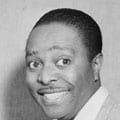 Probably the best known R & B saxophone player of all time, Louis Jordan was a bandleader of the 30s and 40s who was prominent in the rise of the style known as jump blues or jump jive. As well as a consummate alto player, he was a singer, songwriter, arranger and comedian, an all round entertainer who was accepted into the mainstream of U.S. show business, performing with the likes of Bing Crosby and Ella Fitzgerald. He was not a stranger to the Hollywood film scene, though often cast in a subordinate role as was so often the case when uncle tomism was endemic in the movie industry. Although he could be said to have pioneered the rock and roll revolution of the early 50s, his own popularity started to wane, however his music was brought back to the public eye (and ear) when pop singer Joe Jackson revived interest in that style with his Jumping Jive album Saxawoogie
Probably the best known R & B saxophone player of all time, Louis Jordan was a bandleader of the 30s and 40s who was prominent in the rise of the style known as jump blues or jump jive. As well as a consummate alto player, he was a singer, songwriter, arranger and comedian, an all round entertainer who was accepted into the mainstream of U.S. show business, performing with the likes of Bing Crosby and Ella Fitzgerald. He was not a stranger to the Hollywood film scene, though often cast in a subordinate role as was so often the case when uncle tomism was endemic in the movie industry. Although he could be said to have pioneered the rock and roll revolution of the early 50s, his own popularity started to wane, however his music was brought back to the public eye (and ear) when pop singer Joe Jackson revived interest in that style with his Jumping Jive album Saxawoogie
Jackie Kelso
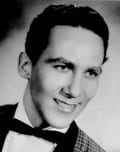 Like many Los Angeles R & B tenor players, Jackie paid his dues playing with the likes of Roy Milton and Johnny Otis. Later, as a session player, Kelso frequently subbed for Plas Johnson, his sound being very similar. Ever since musicologists have been confused as to which is which, especially as Kelso himself is not quite sure. Interestingly on alto he can easily be confused with Earl Bostic. Jackie enjoyed a long and fruitful career, later joining the Count Basie Orchestra as well as featuring on Little Richard’s 1986 album “Lifetime Friend”, produced by Stuart Colman. Twistin the Night Away Smiles
Like many Los Angeles R & B tenor players, Jackie paid his dues playing with the likes of Roy Milton and Johnny Otis. Later, as a session player, Kelso frequently subbed for Plas Johnson, his sound being very similar. Ever since musicologists have been confused as to which is which, especially as Kelso himself is not quite sure. Interestingly on alto he can easily be confused with Earl Bostic. Jackie enjoyed a long and fruitful career, later joining the Count Basie Orchestra as well as featuring on Little Richard’s 1986 album “Lifetime Friend”, produced by Stuart Colman. Twistin the Night Away Smiles
Rahsaan Roland Kirk
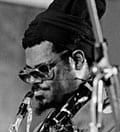 Not always associated with rhythm & blues, Roland Kirk is probably better known as one of the more flamboyant jazz characters, with a penchant for playing several instruments at once, circular breathing, political outspokenness (even on stage) and a jazz style that frequently travels “out there”. His jazz credits as sideman include Mingus and Quincy Jones, but his playing is also known to the public via his flute on the Austin Powers movies. His habit of singing (and hooting) while playing the flute inspired Jethro Tull’s Ian Anderson. Hot Cha
Not always associated with rhythm & blues, Roland Kirk is probably better known as one of the more flamboyant jazz characters, with a penchant for playing several instruments at once, circular breathing, political outspokenness (even on stage) and a jazz style that frequently travels “out there”. His jazz credits as sideman include Mingus and Quincy Jones, but his playing is also known to the public via his flute on the Austin Powers movies. His habit of singing (and hooting) while playing the flute inspired Jethro Tull’s Ian Anderson. Hot Cha
Roger “Chrome Dome” Lewis
 Roger is best known as baritone player with Fats Domino where he was part of the legendary New Orleans sax section with Lee Allen and Herb Hardesty, and more recently with the Dirty Dozen Brass Band. He started out gigging on the Lower 9th Ward with The Wailers, soon followed by tours with Deacon John, Eddie Bo and Irma Thomas. His playing takes R & B baritone to new heights and dimensions, never forgetting his roots but not afraid to go “out there”. Sometimes he comes back. Shake, Rattle and Roll (Fats Domino live)
Roger is best known as baritone player with Fats Domino where he was part of the legendary New Orleans sax section with Lee Allen and Herb Hardesty, and more recently with the Dirty Dozen Brass Band. He started out gigging on the Lower 9th Ward with The Wailers, soon followed by tours with Deacon John, Eddie Bo and Irma Thomas. His playing takes R & B baritone to new heights and dimensions, never forgetting his roots but not afraid to go “out there”. Sometimes he comes back. Shake, Rattle and Roll (Fats Domino live)
Joe Lutcher
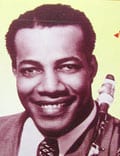 Joe Lutcher was from lake Charles Louisiana. He followed his sister Nellie to L.A. where she was making a name for herself as a singer. Joe’s saxophone talents was soon noticed and he was working with Nat King Cole and Sammy Davis Jr as bandleader. He signed for Specialty records, but was unhappy at the artistic direction, so went to Capitol where he was able to play the more up tempo jump music he loved. Joe composed the song Mardi Gras, later recorded by Professor Longhair and Fats Domino In the early 50s he gave up music to become a preacher, and one of his later claims to fame was that it was he who turned Little Richard to God. Joe Joe Jump
Joe Lutcher was from lake Charles Louisiana. He followed his sister Nellie to L.A. where she was making a name for herself as a singer. Joe’s saxophone talents was soon noticed and he was working with Nat King Cole and Sammy Davis Jr as bandleader. He signed for Specialty records, but was unhappy at the artistic direction, so went to Capitol where he was able to play the more up tempo jump music he loved. Joe composed the song Mardi Gras, later recorded by Professor Longhair and Fats Domino In the early 50s he gave up music to become a preacher, and one of his later claims to fame was that it was he who turned Little Richard to God. Joe Joe Jump
Big Jay McNeely
 Another player inspired by Illinois Jacquet, Big Jay is the archetypical screamer and honker, master of the one note solo. Jay would consider himself a jazz musician but knows hoe to wrench every last bit of emotion from just one note and drive the audience wild. Jay soon discovered his key to commercial success lay in an outrageous stage performance, often taking it beyond the stage: at one show he walked the bar, into the audience who followed him out onto the street where he was promptly arrested. Deacon’s Hop
Another player inspired by Illinois Jacquet, Big Jay is the archetypical screamer and honker, master of the one note solo. Jay would consider himself a jazz musician but knows hoe to wrench every last bit of emotion from just one note and drive the audience wild. Jay soon discovered his key to commercial success lay in an outrageous stage performance, often taking it beyond the stage: at one show he walked the bar, into the audience who followed him out onto the street where he was promptly arrested. Deacon’s Hop
Jack McVea
 Yet another Lionel Hampton graduate, McVea was born and bred in Los Angeles. He wrote the 1947 smash hit Open the Door Richard, which opened the door for McVea to gain success with his own touring R & B band. He also worked with blues shouter Wynonie Harris and guitarist T-Bone Walker. Jack was at the now infamous recording session Slim’s Jam alongside Charlie Parker, at which the inimitable Slim Gaillard introduces him, of course, as “Jack McVouty“. Ride, Ride, Ride
Yet another Lionel Hampton graduate, McVea was born and bred in Los Angeles. He wrote the 1947 smash hit Open the Door Richard, which opened the door for McVea to gain success with his own touring R & B band. He also worked with blues shouter Wynonie Harris and guitarist T-Bone Walker. Jack was at the now infamous recording session Slim’s Jam alongside Charlie Parker, at which the inimitable Slim Gaillard introduces him, of course, as “Jack McVouty“. Ride, Ride, Ride
Freddie “Taxi” Mitchell (Hen Gates)
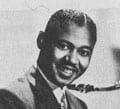 Freddie was originally a boogie and blues piano player in Florida. He relocated to New York where he was taken on by bandleader Fletcher Henderson and later Louis Armstrong. His playing is firmly rooted in the swing era, which he seamlessly adapted to his own brand of Rhythm & blues boogie. After the advent of rock and roll in the 50s, Freddie reissued tracks under the pseudonym “Hen Gates” which later confused record collectors, especially when some tracks where attributed to Freddie Mitchell and Hen Gates. He died in obscurity after taking up a day job as a taxi driver. Airmail Boogie
Freddie was originally a boogie and blues piano player in Florida. He relocated to New York where he was taken on by bandleader Fletcher Henderson and later Louis Armstrong. His playing is firmly rooted in the swing era, which he seamlessly adapted to his own brand of Rhythm & blues boogie. After the advent of rock and roll in the 50s, Freddie reissued tracks under the pseudonym “Hen Gates” which later confused record collectors, especially when some tracks where attributed to Freddie Mitchell and Hen Gates. He died in obscurity after taking up a day job as a taxi driver. Airmail Boogie
Rudy Pompilli
 Originally a jazz musician (and purportedly a disliker of rock & roll), Bill Haley hired him to replace Joey Ambrose. Rudy stayed with Bill almost up to the end of his career, though he did work some band dates on the side with Haley’s guitarist, Franny Beecher Haley’s set was well organised, usually involving playing every song note for note from the record, but he did “cut him loose” on the instrumental Rudy’s Rock Rudy’s Rock
Originally a jazz musician (and purportedly a disliker of rock & roll), Bill Haley hired him to replace Joey Ambrose. Rudy stayed with Bill almost up to the end of his career, though he did work some band dates on the side with Haley’s guitarist, Franny Beecher Haley’s set was well organised, usually involving playing every song note for note from the record, but he did “cut him loose” on the instrumental Rudy’s Rock Rudy’s Rock
Jesse Powell
 Another of the many Texas tenors, Jesse started out with Hot Lips page at the age of 18, followed by Louis Armstrong. He then went on to replace Illinois Jacquet with Count Basie before joining Dizzy Gillespie’s short lived orchestra. Another prolific rhythm and blues session player, Powell’s big fat strident tone is well known to rock and roll fans on his solos for the Bobettes’ Mr. Lee and Solomon Burke’s Cry To Me. Hot Box
Another of the many Texas tenors, Jesse started out with Hot Lips page at the age of 18, followed by Louis Armstrong. He then went on to replace Illinois Jacquet with Count Basie before joining Dizzy Gillespie’s short lived orchestra. Another prolific rhythm and blues session player, Powell’s big fat strident tone is well known to rock and roll fans on his solos for the Bobettes’ Mr. Lee and Solomon Burke’s Cry To Me. Hot Box
Red Price
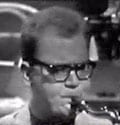 Probably the first UK rock and roll saxophone player, Red was also a top-notch jazz player, featured soloist with Ted Heath, and became a sought after session musician. He played tenor in Lord Rockingham’s 11, was the sound behind the frog in Pinky & Perky and led his own band, the Red Price Combo Red was always immaculately dressed and a real showman and ready wit as well as a consummate multi-instrumentalist and vocalist. Red said of Lord Rockingham’s band “I’ll let you into a secret: we used to tune one tenor sharp, one flat, one baritone sharp and one flat…. and that’s how we got that f***ing awful sound” Roaring Dangerman (TV theme)
Probably the first UK rock and roll saxophone player, Red was also a top-notch jazz player, featured soloist with Ted Heath, and became a sought after session musician. He played tenor in Lord Rockingham’s 11, was the sound behind the frog in Pinky & Perky and led his own band, the Red Price Combo Red was always immaculately dressed and a real showman and ready wit as well as a consummate multi-instrumentalist and vocalist. Red said of Lord Rockingham’s band “I’ll let you into a secret: we used to tune one tenor sharp, one flat, one baritone sharp and one flat…. and that’s how we got that f***ing awful sound” Roaring Dangerman (TV theme)
Red Prysock
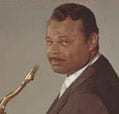 The archetypical “honker and screamer”, Red’s playing conjures up all the frenetic excitement of the style. Early in his career he played with Tiny Bradshaw and composed his big hit Soft. He also played with Roy Milton and Cootie Williams. He gained more widespread acclaim with the advent of rock and roll, when he was taken on board by disc jockey and promoter Alan Freed. Hand Clappin’
The archetypical “honker and screamer”, Red’s playing conjures up all the frenetic excitement of the style. Early in his career he played with Tiny Bradshaw and composed his big hit Soft. He also played with Roy Milton and Cootie Williams. He gained more widespread acclaim with the advent of rock and roll, when he was taken on board by disc jockey and promoter Alan Freed. Hand Clappin’
Boots Randolph
 In spired by King Curtis’s tight articulation on the Coasters’ hit Yakey Yak, Boots’s Yakety Sax is one of the world’s best known saxophone tunes, possibly in most cases as the Benny Hill theme, however we also hear his work every year on Brenda Lee’s Rocking Around the Christmas Tree. He is credited as the first saxophone player to record with Elvis, other sessions include Roy Orbison, Jerry Lee Lewis and Johnny Cash. One of the few saxophone players to be stalwart of the Nashville music scene. Basically Blues
In spired by King Curtis’s tight articulation on the Coasters’ hit Yakey Yak, Boots’s Yakety Sax is one of the world’s best known saxophone tunes, possibly in most cases as the Benny Hill theme, however we also hear his work every year on Brenda Lee’s Rocking Around the Christmas Tree. He is credited as the first saxophone player to record with Elvis, other sessions include Roy Orbison, Jerry Lee Lewis and Johnny Cash. One of the few saxophone players to be stalwart of the Nashville music scene. Basically Blues
Clifford Scott (Mr. Honky Tonk)
 Lionel Hampton discovered the 14 year old prodigy Clifford Scott, who worked with Hampton in the late 40s His big claim to fame is writing the hit Honky Tonk while touring with Bill Doggett. From John Broven’s sleeve notes: “Honky Tonk was conceived by Clifford Scott and Billy Butler in a hotel room jam session before a dance in Lima, Ohio. That night, on stage and without rehearsal, Butler told Bill Doggett and drummer Shep Shepherd to “just play a shuffle” and when they got through the people started to applaud. They wouldn’t get off the dance floor,” Honky Tonk
Lionel Hampton discovered the 14 year old prodigy Clifford Scott, who worked with Hampton in the late 40s His big claim to fame is writing the hit Honky Tonk while touring with Bill Doggett. From John Broven’s sleeve notes: “Honky Tonk was conceived by Clifford Scott and Billy Butler in a hotel room jam session before a dance in Lima, Ohio. That night, on stage and without rehearsal, Butler told Bill Doggett and drummer Shep Shepherd to “just play a shuffle” and when they got through the people started to applaud. They wouldn’t get off the dance floor,” Honky Tonk
Big Al Sears
 Big Al paid plenty of dues coming up through the big bands – Chick Webb, Andy Kirk, Lionel Hampton and finally Duke Ellington, when he replaced the great Ben Webster as soloist. Whilst in a band under the leadership of Johnny Hodges, Al wrote the jive hit Castle Rock, then went on to be a sought after session musician for R & B dates Al Sears was big in the civil rights movement, was highly involved in direct action and was instrumental in fighting the record industry moguls on behalf of Ray Charles, securing royalties he would otherwise have been cheated out of. Good for him! Huffin’ and Puffin’
Big Al paid plenty of dues coming up through the big bands – Chick Webb, Andy Kirk, Lionel Hampton and finally Duke Ellington, when he replaced the great Ben Webster as soloist. Whilst in a band under the leadership of Johnny Hodges, Al wrote the jive hit Castle Rock, then went on to be a sought after session musician for R & B dates Al Sears was big in the civil rights movement, was highly involved in direct action and was instrumental in fighting the record industry moguls on behalf of Ray Charles, securing royalties he would otherwise have been cheated out of. Good for him! Huffin’ and Puffin’
Hal Singer
 Born in Oklahoma, Hal was a stalwart of the Jay McShann Orchestra and now lives in Paris. He is known amongst R & B fans for his hit Cornbread, which shows his skill in making a statement with just one note and a few choice typical jump jive dance phrases, yet Hal is also an accomplished jazz musician who worked with jazz luminaries such as Roy Eldridge and Coleman Hawkins. His later recording such as the album Blues in the Night show a much more sophisticated approach to the blues. Cornbread
Born in Oklahoma, Hal was a stalwart of the Jay McShann Orchestra and now lives in Paris. He is known amongst R & B fans for his hit Cornbread, which shows his skill in making a statement with just one note and a few choice typical jump jive dance phrases, yet Hal is also an accomplished jazz musician who worked with jazz luminaries such as Roy Eldridge and Coleman Hawkins. His later recording such as the album Blues in the Night show a much more sophisticated approach to the blues. Cornbread
Sam “The Man” Taylor
 Another legendary R & B honker, Sam started out in the dance bands of the 30s and 40s, including Lucky Millinder and Cab Calloway. In the 50s he was to be found playing dates with Ray Charles, Ella Fitzgerald, Louis Jordan, Big Joe Turner and was another very prolific session player, including Lavern Baker, Bobby Darin and Buddy Holly Night Train
Another legendary R & B honker, Sam started out in the dance bands of the 30s and 40s, including Lucky Millinder and Cab Calloway. In the 50s he was to be found playing dates with Ray Charles, Ella Fitzgerald, Louis Jordan, Big Joe Turner and was another very prolific session player, including Lavern Baker, Bobby Darin and Buddy Holly Night Train
Joe Thomas
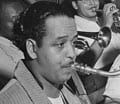 Originally from Pennsylvania, Joe started out playing with Horace Henderson, then Stuff Smith, Jimmy Lunceford and Jay McShann. He was on many recording dates, including Billie Holiday. After the demise of the big bands in the 50s he continued play R & B, until he more or less retired from music to become an undertaker. Page Boy Shuffle
Originally from Pennsylvania, Joe started out playing with Horace Henderson, then Stuff Smith, Jimmy Lunceford and Jay McShann. He was on many recording dates, including Billie Holiday. After the demise of the big bands in the 50s he continued play R & B, until he more or less retired from music to become an undertaker. Page Boy Shuffle
Lionel Torrence (Prevost)
 Born in Louisiana, Lionel Torrence was a regular “swamp pop” session musician whose early career included touring with Zydeco star Clifton Chenier. He was described by musicologist John Broven as “a saxophonist of cherishable individuality with the tone, emotion, and creativity of a top jazzman”, and by boogie piano legend Katie Webster as “only the best saxophone player in the world.” He had a hit with Rooty Tooty b/w Moscow Twist. Moscow Twist
Born in Louisiana, Lionel Torrence was a regular “swamp pop” session musician whose early career included touring with Zydeco star Clifton Chenier. He was described by musicologist John Broven as “a saxophonist of cherishable individuality with the tone, emotion, and creativity of a top jazzman”, and by boogie piano legend Katie Webster as “only the best saxophone player in the world.” He had a hit with Rooty Tooty b/w Moscow Twist. Moscow Twist
Alvin “Red” Tyler
 Red was Lee Allen’s right hand man as baritone player in Cosimo’s studio band, so was the riffing powerhouse behind all those legendary hits of Little Richard, Fats Domino, Etta James, Lloyd Price etc. Always a big figure on the new Orleans funk and R & B scene he formed AFO Records with Harold Battiste (see below) and featured with the likes of Dr. John, Aaron Neville and Lee Dorsey. Walk On
Red was Lee Allen’s right hand man as baritone player in Cosimo’s studio band, so was the riffing powerhouse behind all those legendary hits of Little Richard, Fats Domino, Etta James, Lloyd Price etc. Always a big figure on the new Orleans funk and R & B scene he formed AFO Records with Harold Battiste (see below) and featured with the likes of Dr. John, Aaron Neville and Lee Dorsey. Walk On
Eddie “Cleanhead” Vinson
 Eddie Vinson was born in Texas, where he played locally before touring with legendary bluesman Big Bill Broonzie. he subsequently joined ex Ellington trumpet player Cootie Williams’s orchestra. As a singer, he was able to gain more commercial success than many of his saxophone playing contemporaries, and rose to fame with Jay McShann, Johnny Otis, Count Basie and others. His style could be relaxed and in a very “down home” blues style, rather than always jumping, possibly a legacy of his early days with Broonzie. He could also mix this with a sprinkling of quite sophisticated jazz phrasing. Vinson came by his nickname “Cleanhead” when he lost his hair in a hairdressing accident. Meat’s Too High
Eddie Vinson was born in Texas, where he played locally before touring with legendary bluesman Big Bill Broonzie. he subsequently joined ex Ellington trumpet player Cootie Williams’s orchestra. As a singer, he was able to gain more commercial success than many of his saxophone playing contemporaries, and rose to fame with Jay McShann, Johnny Otis, Count Basie and others. His style could be relaxed and in a very “down home” blues style, rather than always jumping, possibly a legacy of his early days with Broonzie. He could also mix this with a sprinkling of quite sophisticated jazz phrasing. Vinson came by his nickname “Cleanhead” when he lost his hair in a hairdressing accident. Meat’s Too High
Junior Walker
 It’s easy to think of Junior Walker as coming from a later era than most of the players here, ashis hits were from the soul era of the 60s. However he started out in the mid 50s at the tender age of 14 with his band, the Jumping Jacks. In the early 60s he signed to the new Motown label and the rest, as they say, is history: Shotgun, Road Runner, How Sweet it Is, etc. Along with King Curtis and Cannonball Adderley he was among the first players to intensify and refine the tone of the R & B saxophone into what we sometimes define as “funky”, rather than the booting hard swinging growl of earlier exponents, fitting in with the funkier developments in the rhythm sections. Later he also became known for his solo on Foreigner’s Urgent in 1981. Shotgun
It’s easy to think of Junior Walker as coming from a later era than most of the players here, ashis hits were from the soul era of the 60s. However he started out in the mid 50s at the tender age of 14 with his band, the Jumping Jacks. In the early 60s he signed to the new Motown label and the rest, as they say, is history: Shotgun, Road Runner, How Sweet it Is, etc. Along with King Curtis and Cannonball Adderley he was among the first players to intensify and refine the tone of the R & B saxophone into what we sometimes define as “funky”, rather than the booting hard swinging growl of earlier exponents, fitting in with the funkier developments in the rhythm sections. Later he also became known for his solo on Foreigner’s Urgent in 1981. Shotgun
Noble “Thin Man” Watts
 Another Floridian, Noble went to school with Cannonball Adderley. He teamed up with Paul “Hucklebuck” Williams in the band for Showtime At The Apollo. Subsequently, as with so many R & B players, he served some time with Lionel Hampton. He went on to tour with of Chuck Berry, Jerry Lee Lewis, Buddy Holly and the Everly Brothers and had a hit of his own in 1956 with Hard Times. The 70s were a tough time, but the Thin Man made a big comeback in the 80s, thanks to producer Bob “Rattlesnake” Greenlee. Hard Times
Another Floridian, Noble went to school with Cannonball Adderley. He teamed up with Paul “Hucklebuck” Williams in the band for Showtime At The Apollo. Subsequently, as with so many R & B players, he served some time with Lionel Hampton. He went on to tour with of Chuck Berry, Jerry Lee Lewis, Buddy Holly and the Everly Brothers and had a hit of his own in 1956 with Hard Times. The 70s were a tough time, but the Thin Man made a big comeback in the 80s, thanks to producer Bob “Rattlesnake” Greenlee. Hard Times
Paul “Hucklebuck” Williams
 Rare amongst the R & B soloists, Paul played mostly baritone. He had a smash no.1 hit in 1949 with The Hucklebuck, bringing about one of the first R & B commercial successes. It is a simple riff which is very similar to the Charlie Parker tune Now’s The Time which preceded it by a few years, however both the riff and the hucklebuck dance were around long before that. You have to wonder how many people realised word hucklebuck referred to a sexual position, indeed the dance was supposedly very explicit involving the lady lying on the floor. Paul went on to be James Brown’s musical director. Back Bender
Rare amongst the R & B soloists, Paul played mostly baritone. He had a smash no.1 hit in 1949 with The Hucklebuck, bringing about one of the first R & B commercial successes. It is a simple riff which is very similar to the Charlie Parker tune Now’s The Time which preceded it by a few years, however both the riff and the hucklebuck dance were around long before that. You have to wonder how many people realised word hucklebuck referred to a sexual position, indeed the dance was supposedly very explicit involving the lady lying on the floor. Paul went on to be James Brown’s musical director. Back Bender

Great comprehensive list
Jon smith
Boogie kings. GG Shinn. Ned Theal
Jon was the best southern rock sax player
Around
I am a lap steel player who frequently plays blues and gospel. Love this page as a generous source of ideas for licks. Grounding me in the virtue of repetition (with variations). Thanks. Months of work here!
An amazing resource that I for one am extremely appreciative of. Thank you all at TTS.